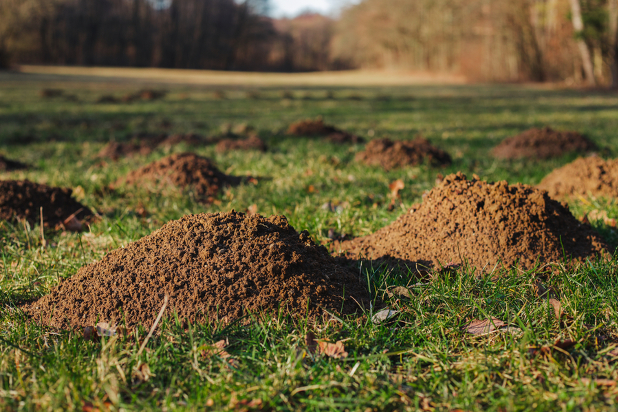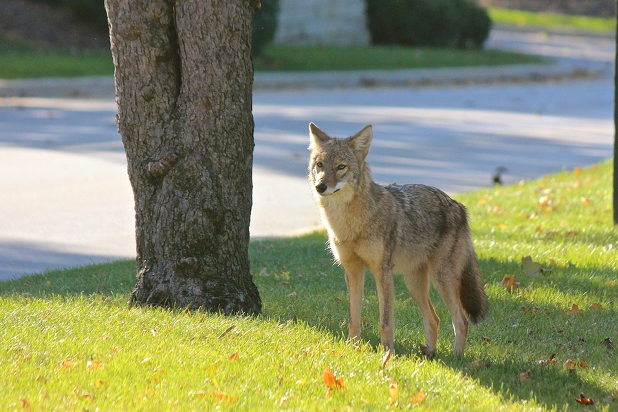Let’s face it: sharing your home with moles is not ideal. Not only do they enter without asking, but they also tend to leave their mark in your luscious, green grass. Moles will dig until they are satisfied with the tunnel that they have created, ruining your property along the way. This behavior makes them one of the most common yard pests. Here are a few insights to mole activity and how moles are causing damage in your lawn.
What are moles?
Moles are small mammals that spend most of their time hunting and digging for food. They are active both in the day and the night as they will die of starvation if they don’t eat every few hours. They feed off of earthworms, grubs, snails, spiders, and more. They can be found on every continent except for South America and Antarctica.
Preferring soil that is damp and loose, moles can typically be seen in gardens, grasslands, and suburban areas. These habitats allow moles to properly construct their tunnels. Additionally, moles may come above the ground to gather material for their burrows or to look for food when the soil is a bit too dry. This action causes the infamous molehills, a clear sign that you have moles in your yard.
How do moles cause damage?
When moles excavate their tunnels and search for food, they lift the soil, producing volcano-shaped mounds or even subsidence (i.e. sinking) in your lawn or garden. Tree roots and bulbs are also compromised as they are lifted to the surface. As a result, plants and grass are stripped from the nourishment that they receive from the soil’s nutrients.
Furthermore, moles can ruin your lawn’s irrigation system(s). Sprinkler heads can be damaged as they rise higher to the surface. Underground pipes can be bent and pushed out of place when moles tunnel through the ground. In the end, your lawn is left looking torn.
What do mole tunnels look like?
Mole tunnels can either be shallow or deep. Shallow tunnels make “surface runways” that are formed when soil is forced upward from the underground. When this occurs, soil may be clustered into chunks, and the mounds appear to be connected in a line like a runway.
Deep tunnels are responsible for causing the larger mounds (molehills) that you may notice in your lawn. These mounds are the soil deposits that are the result of heavy digging and hunting for food. Overall, “surface runways” and mounds are tell-tale signs that moles are inhabiting your yard.
How do I get rid of moles in my yard?
To eliminate moles in your yard, follow these tips:
● Remove their food source. Moles are in your yard looking for food. Moles eat grubs and insects, so it is important to keep your yard free of grubs, ants, crickets, and other lawn insects.
● Don’t overwater your lawn. Moles prefer damp environments, so it’s important not to overwater your lawn.
● Apply repellents. Moles don’t like the smell of castor oil. Apply the oil to your yard monthly to repel these pesky pests.
Although following these tips and tricks will help keep moles out of your space, the best way to prevent them is to contact the experts at Varment Guard. We will ensure that the removal process is done as humanely as possible. Afterward, re-seeding or patching up any destruction will bring your lawn back to its original beauty. Get in touch today!









